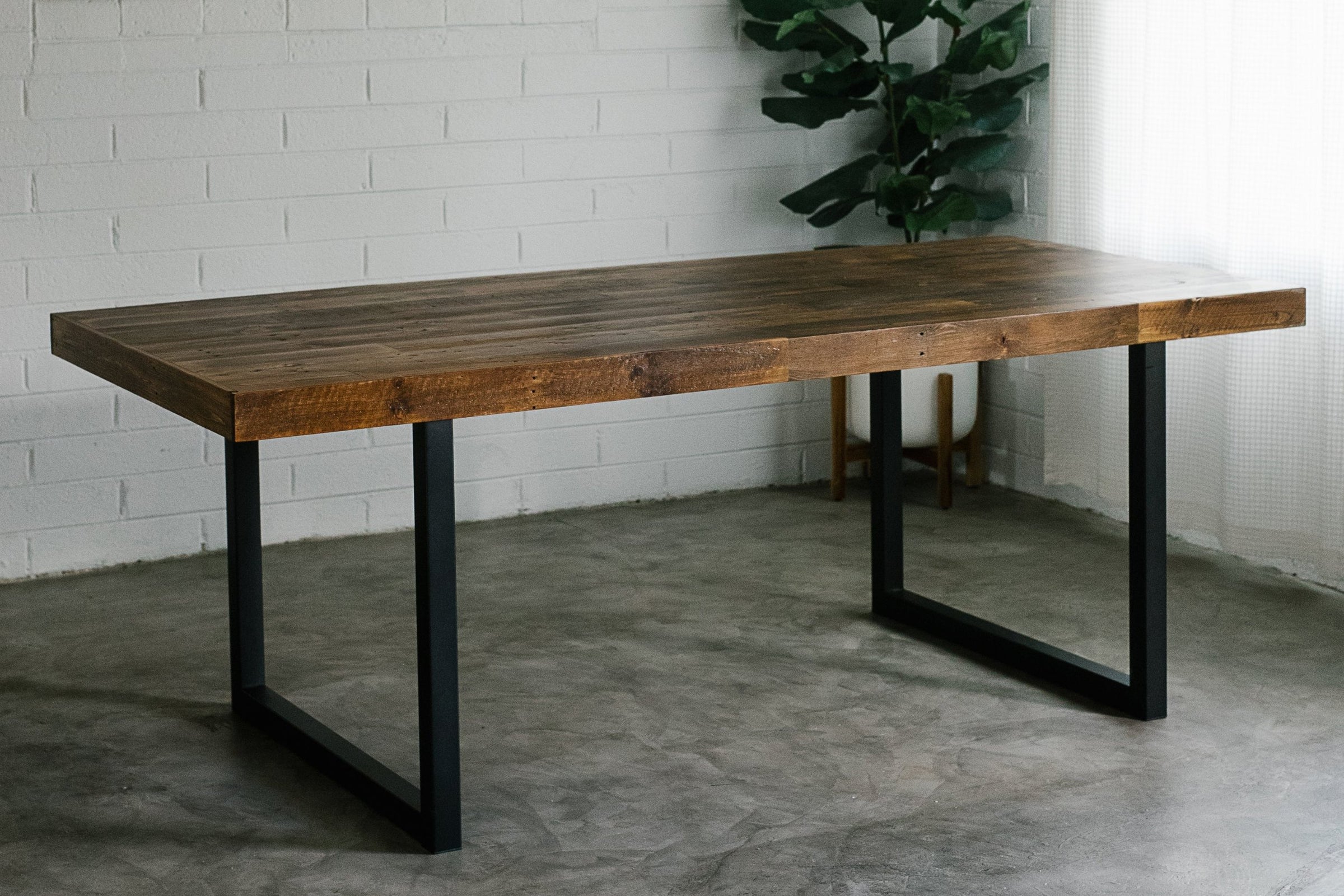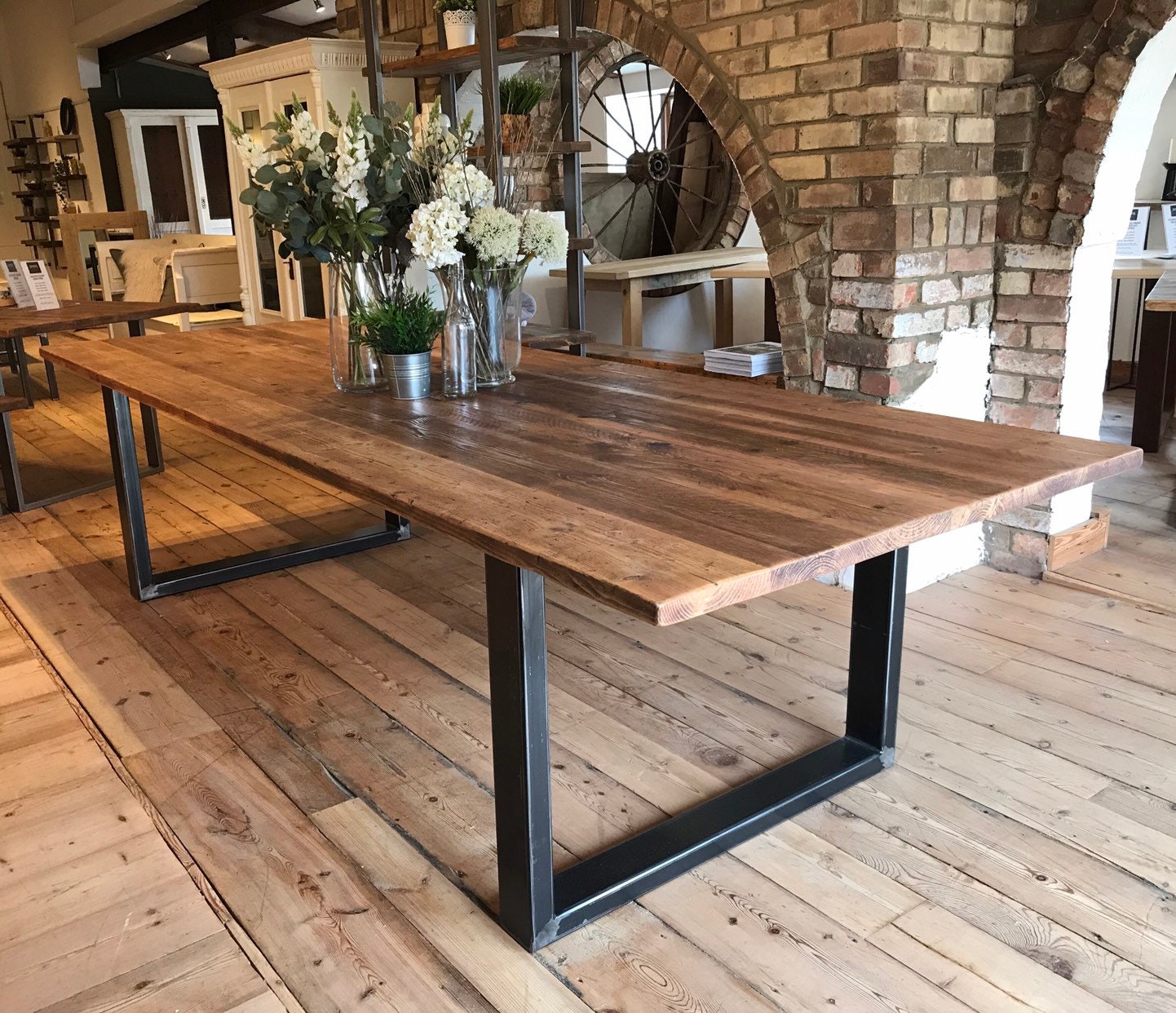Transform Your Furnishings with Costs Dining Table Legs Wood Options
Transform Your Furnishings with Costs Dining Table Legs Wood Options
Blog Article
What to Take Into Consideration When Choosing Table Legs Wood for Your Home.
When choosing timber for dining table legs, numerous essential aspects warrant cautious consideration to make sure both functionality and aesthetic allure. The kind of wood selected can significantly influence the table's longevity, stability, and general design, while the upkeep requirements may influence long-term usability. Furthermore, the interaction of grain patterns and shade with existing furnishings can produce a natural layout. Recognizing these components is important, yet numerous ignore the critical aspect of monetary restrictions. As we discover these factors to consider further, the implications of your options might expose unanticipated obstacles and possibilities.

Value of Timber Type
When picking table legs, the choice of timber kind plays a crucial function in establishing both visual appeals and toughness. Various wood species use differing degrees of strength, weight, and resistance to use, which can substantially influence the capability and longevity of the table. Hardwoods such as cherry, oak, and maple are often preferred for their robust nature and ability to endure everyday use. These woods not only offer structural stability but also resist scratches and damages far better than softer choices.
On the other hand, softer woods like poplar or want, while a lot more economical, may not supply the very same level of resilience and might need more constant maintenance or replacement. The timber type additionally affects the table's ability to sustain environmental factors such as moisture and temperature fluctuations. In addition, the option of wood can impact the ease of tarnishing and completing, which can be essential for attaining the desired appearance.
Aesthetic Factors To Consider
The visual charm of table legs substantially adds to the general visual of the eating space. Dining Table Legs Wood. When picking wood for dining table legs, the grain shade, finish, and pattern are crucial elements that can improve or take away from the area's layout. Different timber kinds show differing appearances and hues; for instance, oak provides a timeless look with popular grain, while walnut uses a rich, dark beauty
Additionally, the form of the legs plays an essential function in specifying the table's personality. Streamlined, minimalist legs can create a contemporary feel, while a lot more luxuriant, transformed legs stimulate traditional charm. The style of the legs ought to balance with existing furnishings and the general motif of the area, whether it be rustic, modern-day, or transitional.
It is additionally important to think about exactly how the legs engage with various other furniture pieces, including chairs and sideboards. A cohesive design not only elevates the dining experience but also adds to the home's total visual comprehensibility. Inevitably, the option of table legs must be a thoughtful decision that reflects personal preference while making certain aesthetic consistency within the area.

Toughness and Security
Resilience and security are essential factors in the choice of table legs, as they straight affect the longevity and safety of the furniture. When selecting timber for eating table legs, one have to consider the fundamental residential properties of various wood types. Hardwoods, such as oak, maple, and cherry, are frequently chosen for their stamina and resistance to use, making them appropriate for high-traffic dining areas.
In addition to the kind of wood, the helpful hints building technique likewise plays a considerable role in the overall stability of the table. Legs that are solidly constructed, either via traditional joinery strategies or modern-day design approaches, will certainly offer improved support and prevent wobbling. It is essential to evaluate the density and layout of the legs; thicker legs are normally much more stable and can withstand greater weight.
In addition, the ecological conditions in which the dining table will certainly be made use of can impact sturdiness. Wood that has actually been appropriately treated for moisture resistance will certainly do better in moist settings. Eventually, choosing the appropriate mix of resilient timber and steady construction will certainly make sure that your table continues to be a practical and safe focal point in your home for years ahead.
Maintenance Needs
Choosing eating table legs made from long lasting wood is simply the beginning; comprehending maintenance demands is equally vital to preserve their look and functionality. Various wood kinds require varying degrees of care, so it is important to understand what is required for your particular selection.
Regular cleansing is fundamental; use a soft, damp fabric to get rid of dust and particles. Stay clear of severe chemicals that can harm the finish. For wood coatings like varnish or lacquer, periodic polishing with furnishings wax can boost luster and provide a safety layer against scrapes.
Preventative steps are critical as well. Use rollercoasters and placemats to prevent straight call with wet or hot things, which can warp or tarnish the wood. Furthermore, think about positioning felt pads under the legs to stop scrapes on your floor covering and lower wear on the wood
Humidity control is one more considerable variable; keeping a stable environment helps to avoid bending and fracturing. Think about making use of a humidifier or dehumidifier as essential. if your eating location is susceptible to variations in temperature level and wetness.
Budget Plan and Expense Aspects
When preparing to buy dining table legs, comprehending budget plan and expense elements is necessary to make a notified decision. The kind of timber picked for the legs dramatically affects the general price. Hardwoods, such as oak or walnut, often tend to be extra pricey than softwoods like want, because of their sturdiness, aesthetic appeal, and deficiency. In addition, think about whether you are deciding or buying pre-made legs for customized designs, as modification commonly incurs higher prices.
Labor and craftsmanship likewise play a pivotal function in the total cost. Handmade or artisan-crafted legs might carry a costs price tag, showing the ability and time invested in their creation. It's vital to assess the equilibrium in between quality and expense; spending more in advance can bring about a longer-lasting product that needs much less maintenance in time.
Verdict
In recap, selecting the proper timber for eating table legs necessitates cautious factor to consider of numerous variables, including wood kind, visual allure, budget, maintenance, and resilience restrictions. The option of hardwoods such as oak and maple can improve both stamina and aesthetic charm, while softer timbers may be a lot more cost-effective however much less enduring. Eventually, a knowledgeable decision relating to material choice will add to the overall functionality and more info here longevity of the hop over to here table, ensuring a beneficial financial investment for the home.
When picking timber for dining table legs, a number of essential elements warrant careful factor to consider to make certain both capability and visual charm.When selecting eating table legs, the selection of wood type plays an important role in determining both visual appeals and durability. When picking timber for eating table legs, the grain pattern, coating, and shade are pivotal elements that can boost or take away from the room's style. When picking timber for dining table legs, one should take into consideration the inherent homes of different wood kinds.In recap, picking the ideal wood for eating table legs necessitates careful consideration of various variables, consisting of timber kind, visual appeal, budget plan, upkeep, and resilience restraints.
Report this page